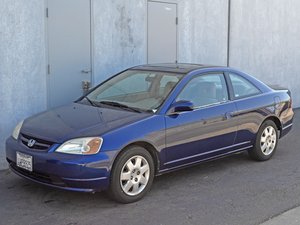Why does the car’s temperature gauge rise after an hour and half trip?
Any suggestions would be greatly appreciated. I have 2004 Honda Civic LX with 179,000 miles. I drove to Lexington, which is an 88 mile trip. As soon as I arrived at my destination, I noticed my temp gauge steadily rising. Before I could even find a parking spot, I had to turn off my car due to the gauge reading too high. I waited for about 30 mins to let it cool off and drove the car to a garage, which was 0.5 miles away, which the temp was fine for that quick trip. The mechanic told me that he was not sure why it overheated. I was thinking maybe it was just a fluke because it never has done before. Driving back home (88 miles), approx. 1 mile away from my house, I had to to pull over and shut my car off because the gauge was rising again. That night, I replaced the thermostat and bleed and burped the radiator with brand new coolant. The following day, I made a trip to Louisville (40 miles) and this happened again when I was just a few miles away from home to conclude the trip. Any thoughts or ideas please and thank you.
Cette question est-elle utile ?

 1
1 
 1
1 
 46
46 